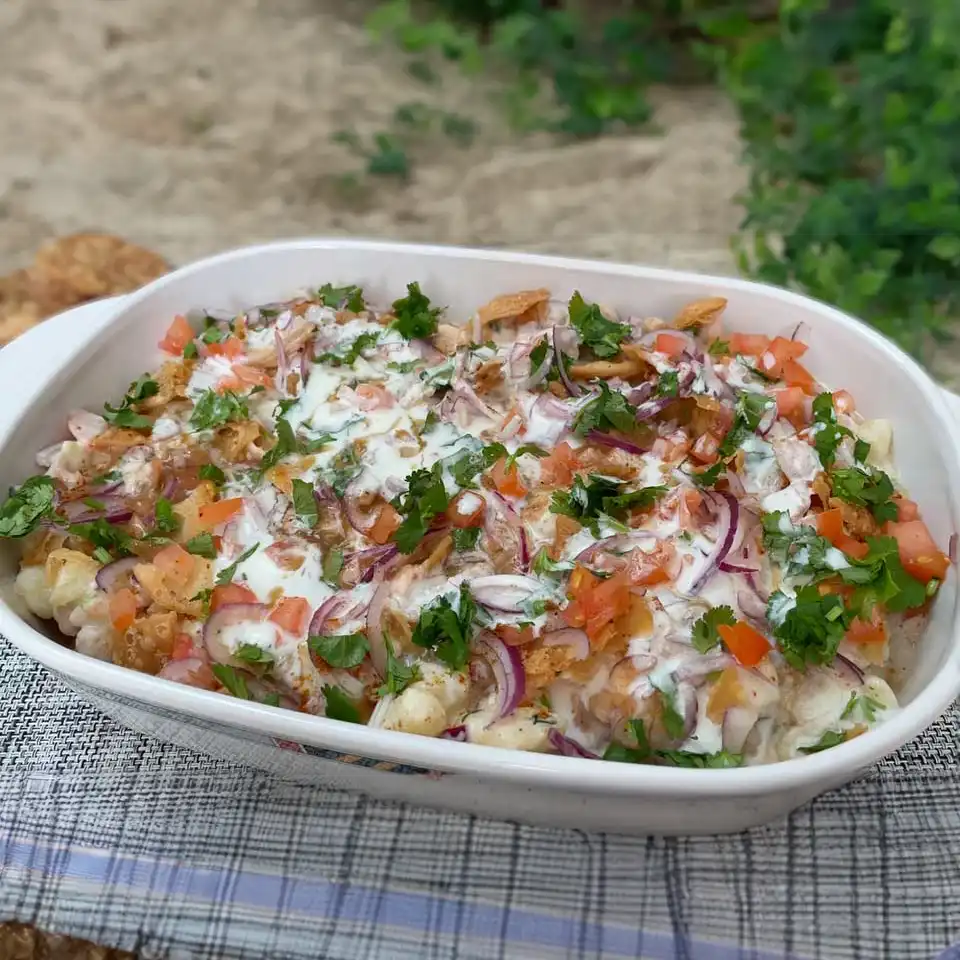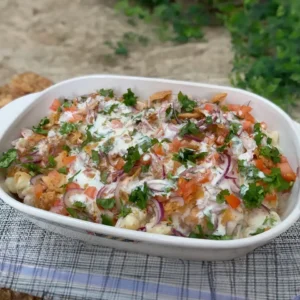
Chana Chaat, a beloved street food delicacy originating from the vibrant culinary landscape of India, is a medley of flavors and textures that tantalize the taste buds.
This recipe boasts a delightful blend of chickpeas, potatoes, onions, tomatoes, and aromatic spices, all brought together with creamy yogurt and tangy tamarind chutney.
It’s a dish that effortlessly marries simplicity with depth, making it a favorite among both novice cooks and seasoned food enthusiasts.
Originating from the streets of India, where bustling markets and roadside vendors serve up irresistible snacks, Chana Chaat has evolved into a staple dish enjoyed across the globe.
Its humble beginnings reflect the resourcefulness of Indian cuisine, transforming basic ingredients into a culinary masterpiece bursting with flavor.
Despite its exotic name, Chana Chaat is surprisingly easy to prepare, making it an ideal choice for beginners eager to explore the world of Indian cuisine.
With just a few simple steps and readily available ingredients, you can recreate the authentic taste of street-side chaat in the comfort of your own kitchen.
Expert Tip: For added depth of flavor, roast the potatoes before adding them to the chaat. This will enhance their natural sweetness and create a delicious caramelized exterior.
Chickpeas (Boiled): Tender and protein-packed, chickpeas provide a hearty base for the chaat, adding substance and a nutty flavor.
Potatoes (Boiled): Soft and creamy, boiled potatoes complement the chickpeas, adding a comforting texture to the dish.
Onions: Sharp and pungent, onions lend a refreshing bite to the chaat, balancing the flavors with their distinct taste.
Tomatoes: Juicy and tangy, diced tomatoes add brightness and acidity, enhancing the overall freshness of the chaat.
Coriander: Fragrant and vibrant, fresh coriander leaves impart a burst of herbal flavor, elevating the dish with their aromatic presence.
Chaat Masala: A quintessential spice blend, chaat masala infuses the chaat with a harmonious mix of tanginess and warmth, tying together all the ingredients.
Salt: Essential for seasoning, salt enhances the natural flavors of the ingredients, ensuring a well-balanced taste.
Yoghurt: Creamy and luscious, yogurt forms the base of the chaat mixture, providing a cooling contrast to the bold spices and tangy chutney.
Tamarind Chutney (Imli): Sweet and tangy, tamarind chutney adds a punch of flavor to the chaat, lending it a distinctive tanginess.
Papdi: Crispy and crunchy, papdi adds a textural contrast to the chaat, providing a satisfying crunch with every bite.
Expert Tip: To save time, you can use canned chickpeas instead of soaking and cooking fresh ones. Just be sure to rinse them thoroughly before adding to the chaat mixture.
Expert Tip: Experiment with different toppings and garnishes, such as sev (crispy chickpea noodles) or grated paneer (Indian cottage cheese), to customize the Chana Chaat according to your taste preferences.
Cooking chickpeas for Chana Chaat typically takes about 1 hour after soaking, ensuring they are tender and easily mashed with a fork.
Yes, you can use canned chickpeas as a convenient alternative. Simply rinse and drain them before adding to the chaat mixture.
Refrigerating the Chana Chaat before serving allows the flavors to meld together and enhances the overall taste. However, you can serve it immediately if preferred.
Yes, feel free to adjust the amount of chaat masala and green chilies according to your preference for spiciness.
Leftover Chana Chaat can be stored in an airtight container in the refrigerator for up to 2 days. Just be sure to consume it within that time frame for the best taste and quality.
Here are some more recipes for you to enjoy! If you my recipes don’t forget to rate and leave a comment.
If you have any recipe suggestions, please do not hesitate to ask me. A great way to stay in contact with me is through Instagram, Facebook, Twitter and YouTube. Don’t forget to tag me @CookwithNabeela in your recipe photos!

Subscribe now to receive my latest recipes directly in your inbox. Stay up-to-date and never miss out!

I love to cook! I want to share with you my favourite, delicious family-friendly recipes. I want to inspire you to create fantastic food for your family every day.
Add your first comment to this post